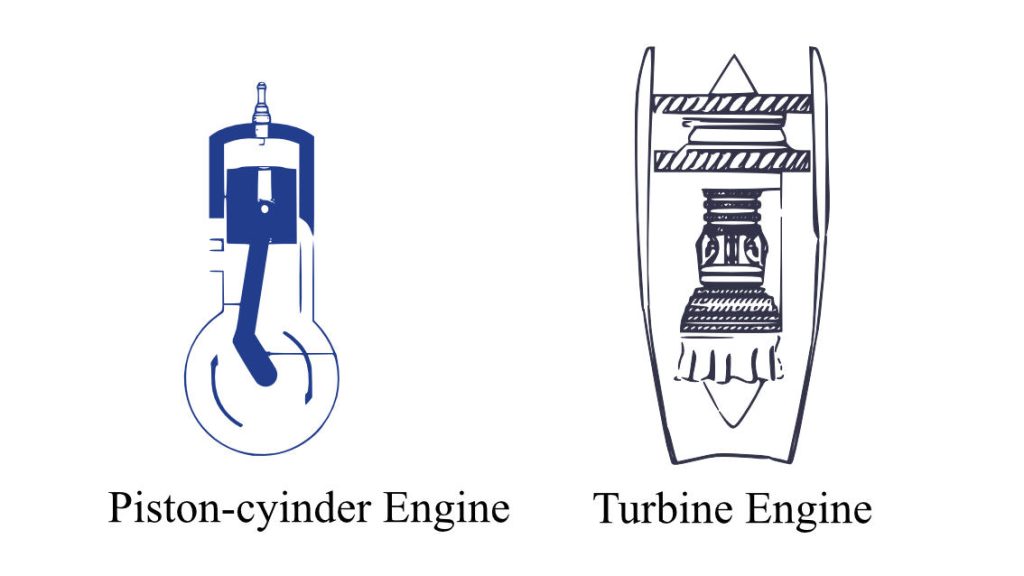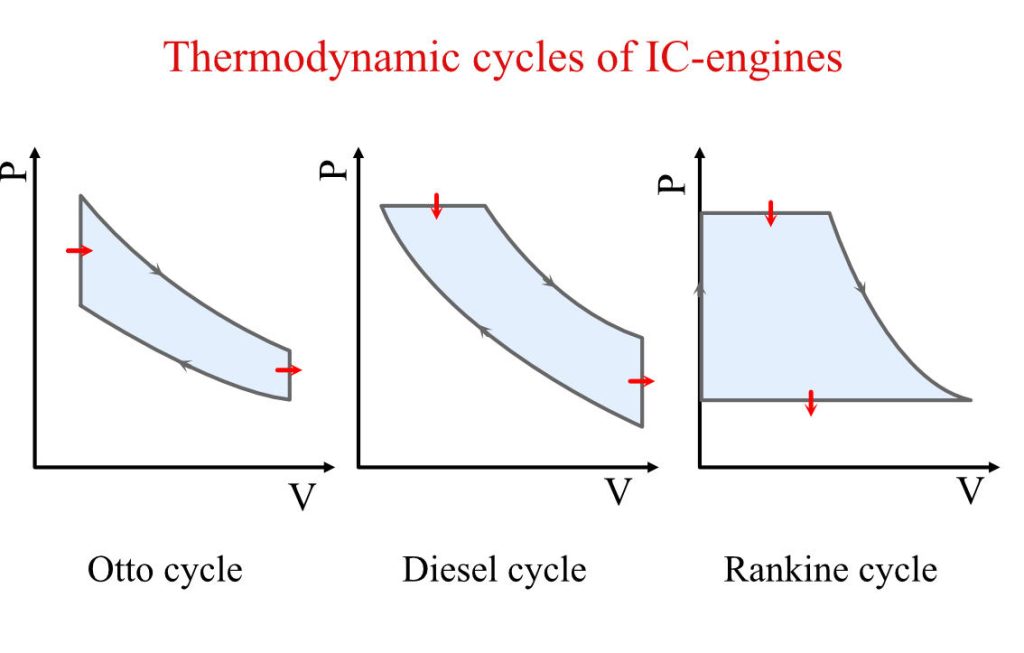The course of human travel changed since the invention of the internal combustion engine in the 19th century. From ships and airplanes to cars, these are everywhere. Even though a century has passed, they are still omnipresent. This blog post will show the detailed working of these engines, their types, and recent advancements.
Internal Combustion engine
Internal combustion engine, as the name suggests are those type of heat engines in which ignition or combustion takes place internally, i.e., fuel is ignited within the engine housing to produce work. In contrast to external combustion like steam engine, where combustion takes place outside the engine.
The generation of work can be done in two ways either with piston-cylinder (i.e. reciprocating engines) or with a turbine. The former is the most common type that you can see in your bike, scooter, or cars.
Working of Internal Combustion engine
Combustion, the chemical process of releasing energy in the form of heat from the fuel mixture, is the primary step of these engines. From thermodynamics, we know that raising the temperature of gases increases their pressure. The heat generated by combustion increases the temperature of the gases, which in turn expands and exerts pressure.
This increases pressure is used to generate work either with a piston-cylinder arrangement or through a turbine.
In the piston-cylinder engine, this causes the piston to move, which rotates the crankshaft attached to it. Thus, converting a portion of the input energy of fuel into useful work of the piston.
Whereas in turbine engine, this causes the blades of the turbine to rotate as the high temperature gas strike them. This results in continuous work generation.

Types of Internal Combustion engine
Internal combustion engine (IC engine) is an umbrella term that encompasses a wide variety of engines, ranging from piston-cylinder-based engines that are intermittent to turbine-based engines that are continuous in power delivery.
Classification of the internal combustion engine based on the power delivery:
- Intermittent (Piston-cylinder): The power output of such engines is intermittent, thus requiring a large flywheel to reduce engine vibration and generate smoothen power delivery from the engine.
- Continuous (Turbine): Such engines’ power output is continuous, thus generating great power without significant vibration.
Despite the intermittent power delivery, piston-cylinder engines are often extremely responsive and fuel-efficient. This makes them optimum for use in vehicles, locomotive engines, or ships.
On the contrary to that, the turbine engine possesses higher power-to-weight ratio, and the lack of intermittent pressure waves also reduces vibration significantly.
All internal combustion engines can also be classified based on the thermodynamic cycles they work in:
- Otto cycle: This is an idealized cycle for a spark ignition engine (SI) like a petrol or CNG engine. It consists of two isentropic processes and two isochoric processes.
- Diesel cycle: It is idealized for compression ignition engines (CI) like a diesel engine. It consists of two isentropic processes, one isochoric and one isobaric.
- Brayton cycle: This is an idealized cycle for turbine engines like jet engines. It consists of two isentropic processes and two isobaric processes.
All these cycles can be seen in the figure below.

The reciprocating engine can further be classified as:
- Two-stroke engine: Those engines in which the piston covers 2 strokes to complete one thermodynamic power cycle.
- Four-stroke engine: Those engines in which the piston covers 4strokes to complete one thermodynamic power cycle.
Research and Advancement in IC engine
Over the last few decades, research and development in the field of material engineering and design engineering have helped manufacturers to reduce greenhouse emissions and enhance the performance and efficiencies of these engines. Technologies like variable valve timing (VVT) enable valve acceleration based on engine speed. The addition of fins around the cylinder enhance heat dissipation, and the incorporation of electronic control unit enables precise control of ignition time and fuel-air mixture.
But, the growth trend of electric vehicles (EVs) by manufacturers like Tesla, Volkswagen, and BYD imposes a great challenge to the applicability of IC engines. But, it is also pushing the boundaries of state-of-the-art IC engine design to meet up with technological advancement and sustainability. Hybrid or methanol-based vehicles are those such attempts to keep these engines alive.
Conclusions
From horses to external combustion engines and finally, to internal combustion (IC) engines, that’s how the world has seen the advancement of vehicles. At the core level, nothing much has changed in the IC engines, but as a whole, they are a lot more advanced than they used to be. What next is to come in their advancement is yet to be seen.
Some key learnings from the post:
- Internal combustion engine: Those types of heat engines in which ignition or combustion takes place internally.
- Thermodynamic cycles of IC engine: There are three major thermodynamic cycles on which these engines work, the Otto cycle, the Diesel cycle, and the Brayton cycle.

Android Apps
⭐️ ⭐️ ⭐️ ⭐️ ⭐️ 1000+ | 400,000 + Downloads (Cumulative)
At eigenplus, our goal is to teach civil engineering students about structural analysis and design starting from the fundamental principles. We do this with the help of interactive android applications and accompanying web articles and videos.
Our apps have helped more than 400 thousand students across the world to understand and learn the concepts of structural engineering. Check out our apps on the google play store.